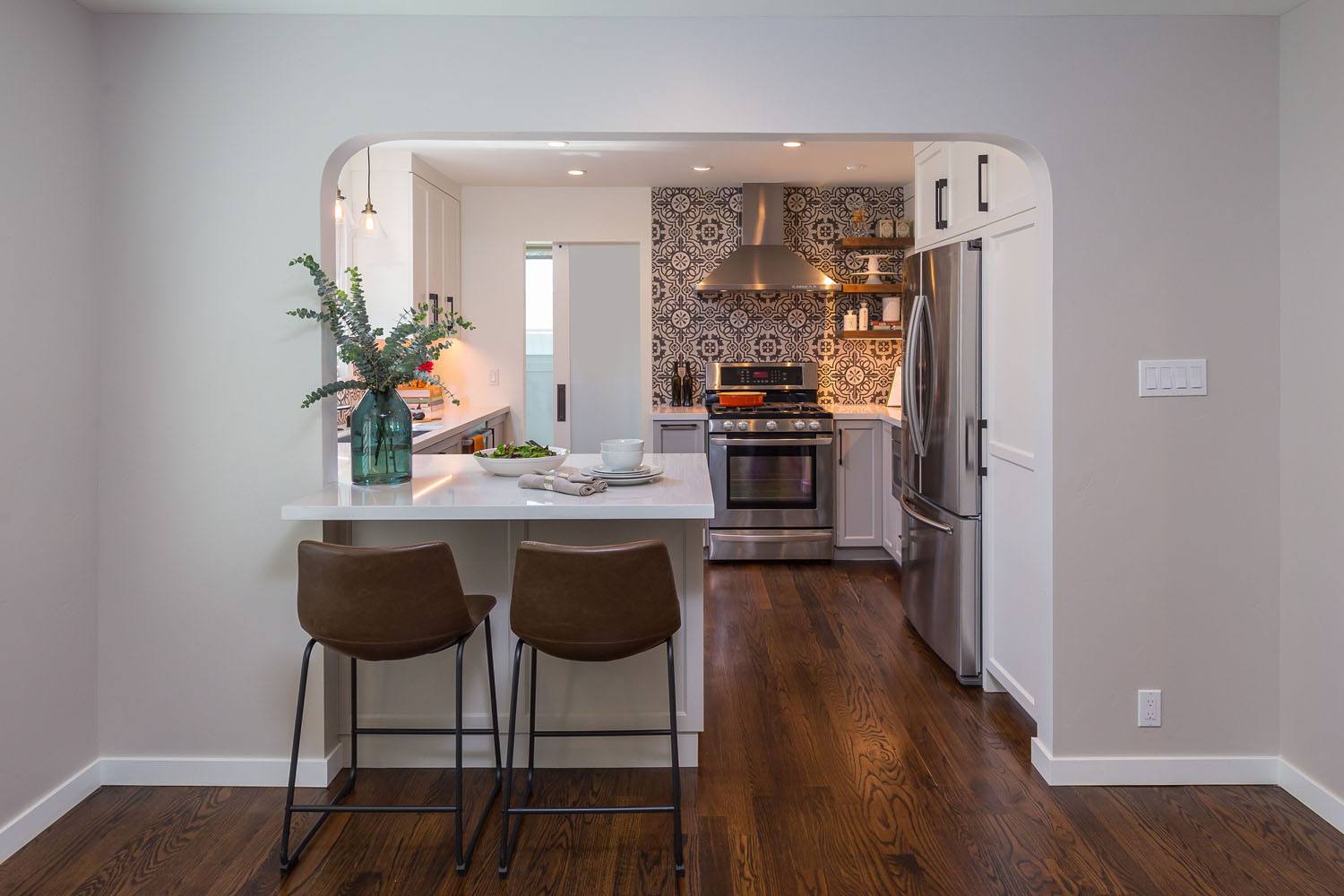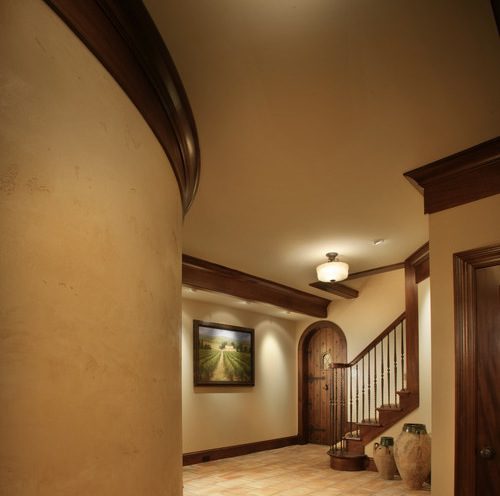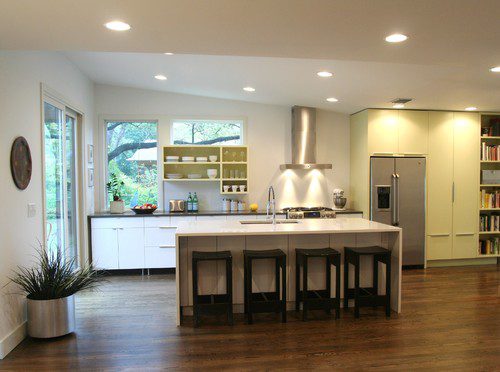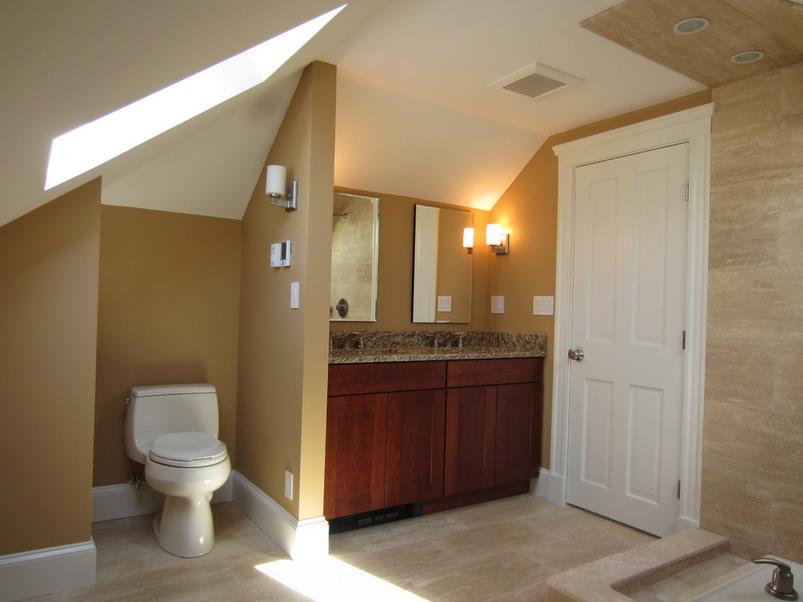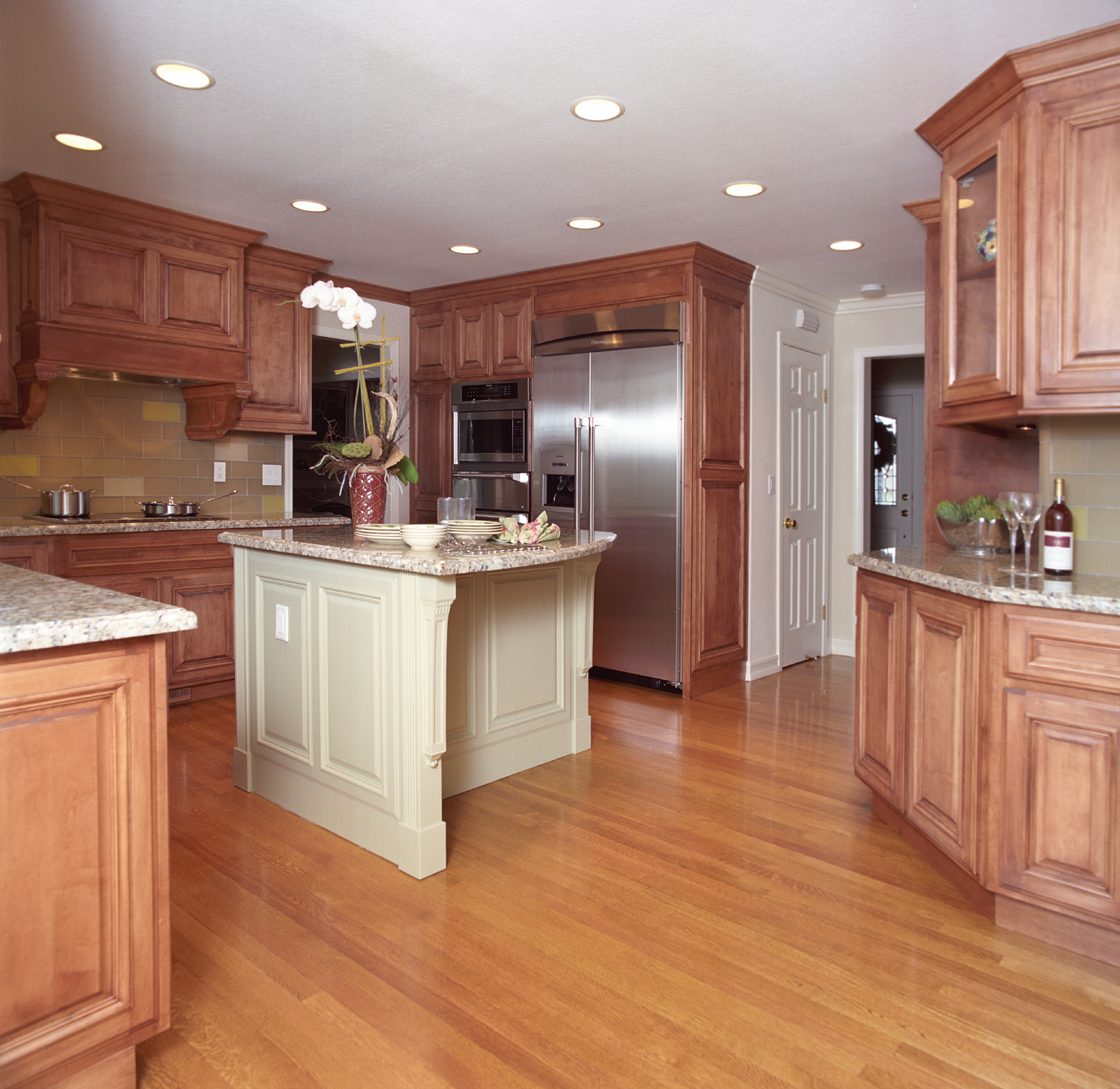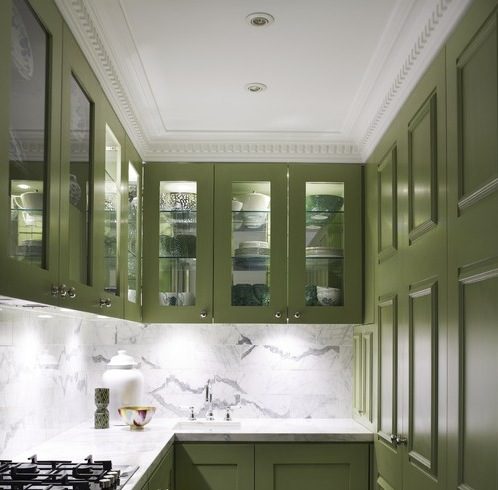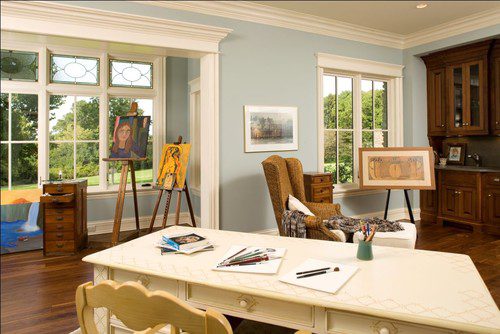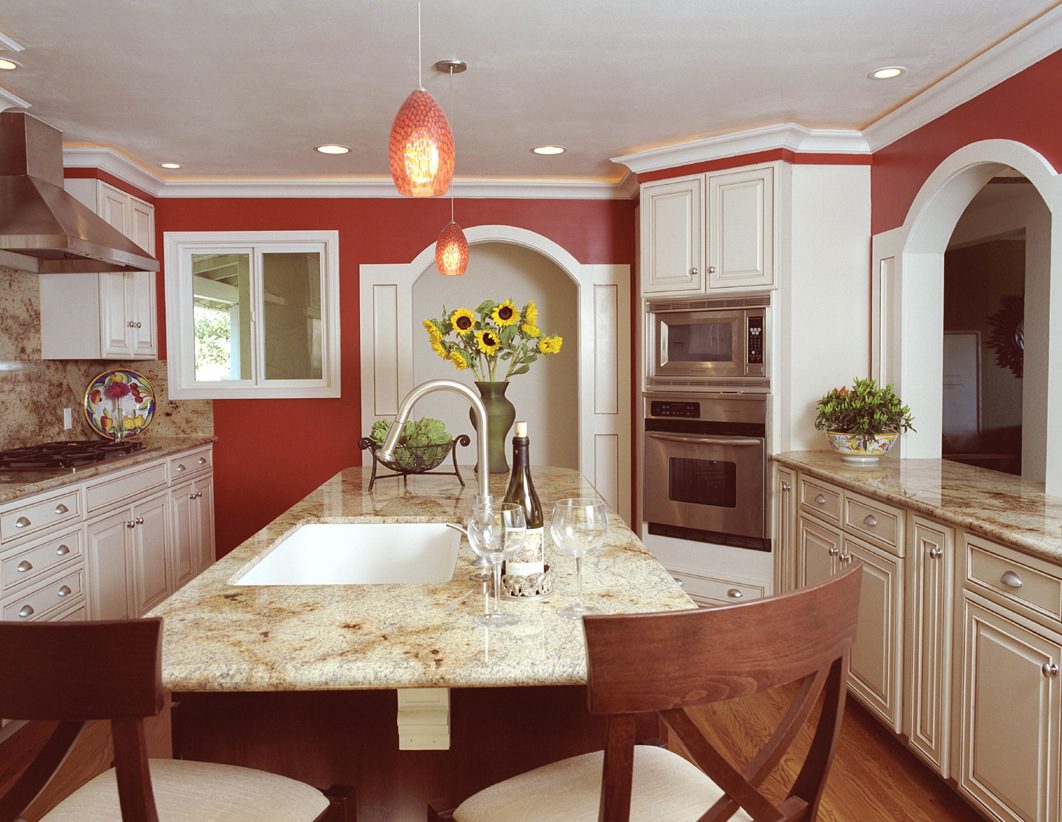When You Should Use Crown Molding
Crown molding is a personal aesthetic, so there is not really a specific code or design rule stating you must use it. However, from a design perspective, you should use it to reinforce the style of your home. The typical curved crown molding style finds its greatest success in traditionally styled homes. Whether a home is rooted in a ‘cottage’, ‘craftsman’, ‘Victorian’ or other, crown molding can help to reinforce those beautiful details of the home. As you can see in the photo above, the stained crown molding reinforces the rich tones of the stairs and handrails and adds to the rich character of the home which can also be seen in the old-world style front door.
Another opportunity to add crown molding is if you have really tall ceilings (8 feet or taller). Crown molding applications in these spaces adds a tailored look by providing dimension to what would otherwise be a 2-dimensional wall and can help make these spaces feel more intimate and less vacuous.
Photo Credit: Houzz
When You Should NOT Use Crown Molding
Crown molding should never be installed in rooms with a ceiling height of less than 8 feet. A low ceiling accentuated with trim will make the room feel smaller than it is. Be wary, do not use crown molding if there are potential awkward ceiling transition and talk to your installer on how they plan to execute the crown molding in that area. Avoid using crown if you already have decorative ceiling features like beams, in these cases, ‘less is more’. Also, contemporary or modern styled homes are not good candidates for crown molding in that their design aesthetic seeks a more minimal and cleaned lined approach.
Photo Credit: Houzz
Awkward Crown Molding Transitions
For example, how would you transition crown molding from adjoining rooms with vaulted and 8-foot ceilings as seen in the sample above? Rule of thumb: never use crown molding if it is a detriment to the overall look of the home!
Photo Credit: Next Stage Design
Transitions and Crown Molding
Pay particular attention to how wall’s crown molding will transition to other built-in cabinetry. Many kitchen remodels today, do away with the soffit above the wall cabinets and instead bring the wall cabinets to the ceiling in order to maximize storage. In these situations, the cabinet crown will need to be designed with the remaining house crown molding should you decide to add it to the rest of your home (albeit at now or in the future).
This is a common oversight, especially when the kitchen is adjacent to a great room or family room. You want to avoid awkward transitions, making them appear planned and pleasing to the eye rather than an abrupt stop or mistake. Select coordinating profiles, which are available in both paint and stain-grade finishes. That way they will seamlessly flow into one another. Notice in the photo above that the white house crown and stained cabinet crown mesh perfectly.
Photo Credit: Next Stage Design
Would you like to add crown molding? Schedule a consultation with Next Stage Design and give your home the finishing touch of crown molding!
Different Types of Crown Molding
There are thousands of crown molding types ranging from a simple cove profile to more ornate and elaborate design. You can even ‘stack’ your crown to create a customized the look by adding multiple crown components. You’ll see that feature frequently in Classical styled homes where a ‘dental’ or ‘egg and dart’ molding is sandwiched between a top crown and a bottom bead molding. This creates a taller crown with a lot of character.
Photo Credit: Houzz
Pairing Crown and Baseboards
When selecting your crown, look for a coordinating baseboard profile. If there is not a specified match, try to pair some of the curves from your crown onto your baseboard. You should also use similar principles of proportion. For example, with a large stacked crown, choose a taller, beefier baseboard for a proper counter balance. If your crown is angular, select a more angular baseboard. Typically you also match the stain/paint of crown molding and the baseboard. However, this is not a rule.
Another element to consider is the window and door casing. While the crown is limited in its connection to the ceiling, baseboards touch the doorway casing. You want to carry a motif all the way around. Mismatched casings and baseboards are a common misstep.
Photo Credit: Houzz
Style Guidelines to Follow
Remember that crown molding is all about personal preference. But there are a few style guidelines you should consider when planning its installation. The room should have a ceiling height of at least 8 feet. The standard molding and baseboard width for a room with an 8-foot ceiling is between 3.5-4.5 inches. You can choose a more ornate style if the home itself can stand up to it.
A taller ceiling can certainly handle a stacked crown but it would appear top heavy in an 8-foot room. Match the crown’s profile to the home’s style. Look for corbel features, rafter details, arches, anything you can use as a reference point to select your crown profile. Choose a simpler, cove crown in more craftsman or bungalow style home. If you are not sure what crown molding would work best in your home, call in the help of a professional remodeling designer. Their trained eye and experience will help you make the right choice for your home.
Photo Credit: Next Stage Design
Save
Save

